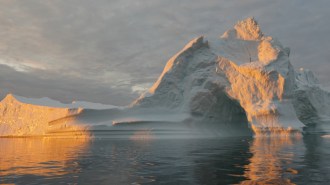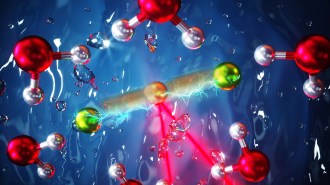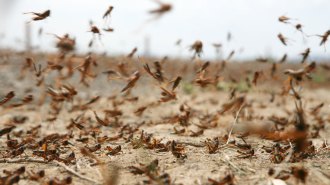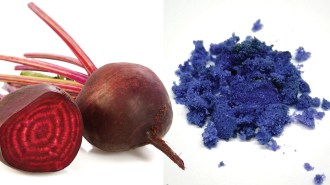Search Results

Earth’s Oceans Broke Heat Records in 2020
In this guide, students will learn about how the amount of heat energy that Earth’s upper oceans have absorbed has increased over time. Then, students will discuss strategies for interpreting, understanding and communicating data.
Communicating data
Students will discuss how graphs and quantitative analogies are useful for interpreting and understanding data. Then, students will analyze and compare how effective each strategy is at communicating a scientific claim. As an extension, students may propose an alternative method of displaying or explaining given data.

Chemical Bond Acts Like a Mash-Up
In this guide, students will learn about recent research findings that challenge long-held ideas about chemical bonding and discuss how to incorporate exceptions to general chemistry concepts into their learning.
Bonds in limbo
Students will answer questions about the online Science News article “This weird chemical bond acts like a mash-up of hydrogen and covalent bonds,” which explores new research that suggests chemical bonds exist on a continuum. A version of the story, “Chemical bond acts like a mash-up,” can be found in the January 30, 2021 issue of Science News.
Accepting the exceptions
Students will discuss the classical definitions of chemical bonds and determine how to adjust those definitions based on new research. Then, students will talk about the best strategies for assessing general chemistry concepts and exceptions to those generalizations.
Create a recipe for life
Students will research the conditions necessary for the formation of organic molecules and living things. Working in groups, students will then develop a “recipe” for life based on physical, chemical, geological, astronomical and biological principles. Class discussions will cover the role of interdisciplinary research in studying the origins of life on Earth and searching for life beyond our solar system.

Chemical Coaxes Locusts to Swarm
In this guide, students will learn how a newly identified pheromone may influence species behavior, research a pheromone that interests them and discuss why scientists are interested in studying such chemicals.
Chemicals cue behavior
Students will explore the chemical makeup of pheromones, how the chemicals may cue species behavior and why it’s important for scientists to study such information. Students will answer questions related to the pheromone discussed in the Science News article before applying the same questions to a pheromone of their choice.
The science of locust swarms
Students will answer questions about the online Science News article “A single molecule may entice normally solitary locusts to form massive swarms,” which describes a compound used in locust congregation that might also be used to control the pests. A version of the story, “Chemical coaxes locusts to swarm,” can be found in the September 12, 2020 issue of Science News.

Beets Bleed Red, But Chemists Turn It Blue
In this guide, students will learn how light and chemical structures affect color and how chemists apply that knowledge to create pigments. Students will then pair up to research a pigment of their choice.
Creating the blues with chemistry
Students will answer questions about the online Science News article “Beets bleed red but a chemistry tweak can create a blue hue,” which explores how scientists altered the molecular structure of a pigment molecule from beets. A version of the story, “Beets bleed red, but chemists turn it blue,” can be found in the May 9 & May 23, 2020 issue of Science News.
Colorful chemistry
Students will review concepts of light and chemical structures to explore color. Then, students will partner up to research a pigment of their choice and present their findings to the class.